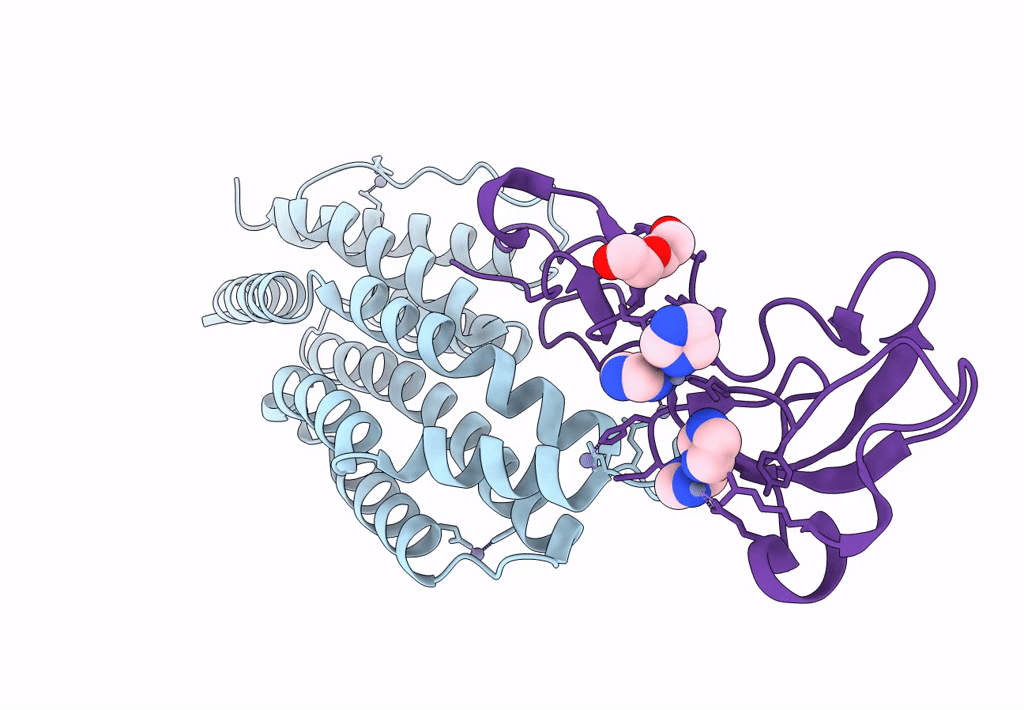
Deposition Date
2022-04-11
Release Date
2023-04-19
Last Version Date
2024-10-23
Entry Detail
PDB ID:
7ZJM
Keywords:
Title:
Crystal structure of a complex between CspZ from Borrelia burgdorferi strain B408 and human FH SCR domains 6-7
Biological Source:
Source Organism:
Borreliella burgdorferi (Taxon ID: 139)
Homo sapiens (Taxon ID: 9606)
Homo sapiens (Taxon ID: 9606)
Host Organism:
Method Details:
Experimental Method:
Resolution:
2.59 Å
R-Value Free:
0.27
R-Value Work:
0.21
R-Value Observed:
0.22
Space Group:
P 21 21 21


